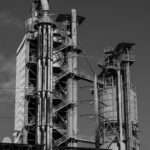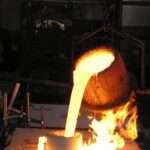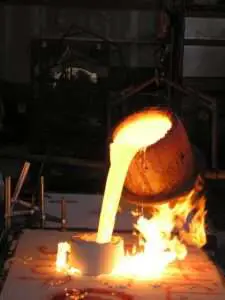
Stock Analysis – Birla Corporation Ltd. (2024-25)
In this article we will try to analyze Birla Corporation Ltd. based on previous six years of financial statements viz Balance sheet, Profit and Loss statement and Cash flow statement. With this fundamental analysis we will try to gain insight into the business activities, financial health, operating efficiency and profitability of the company and finally try to derive the intrinsic value of the stock using Discounted Cash Flow method and the price at which the stock becomes attractive for long term investment. This article is divided in three sections as listed below :-
Section 1: Qualitative Fundamental Analysis comprising of General Introduction, Business overview dwelling into Business Model, Strengths and Weakness, Long Term Sustainability and finally the competitors.
Section 2:Quantitative Fundamental Analysis on Financial Health, Operating Efficiency And Profitability.
Section 3: Calculation Of Intrinsic Value.
General Introduction
Dated: 14 Feb 25
Company: Birla Corporation Ltd.
CMP: Rs. 1,010.05
Market Capitalisation: Rs. 7,777.93 Cr.
Share Holding Pattern:

Promoters: Harsh V Lodha
Peers: Ultra tech cement, Ambuja cement, Sree cement, ACC, JK cement
Fundamental Analysis Of Birla Corporation Ltd.
Qualitative Analysis
General Introduction:
The MP Birla Group, named after Syt. Madhav Prasadji Birla (1918-1990), encompasses a range of successful businesses and social initiatives. Founded in 1919, Birla Jute Mills is the oldest unit within the Group and is now part of Birla Corporation Limited, a leading cement producer with a capacity of 20 million tonnes. The Group’s other business interests include cables and guar gum, with three listed cable companies—Birla Cable Limited, Vindhya Telelinks Limited, and Universal Cables Limited. The MP Birla Group has a unique structure, where independent trusts and societies hold significant stakes in its companies. A portion of the profits generated by the Group’s enterprises is directed through these charitable trusts to support social causes, such as the establishment of hospitals and educational institutions, reflecting the Group’s commitment to societal development alongside business success.
Business Overview:
India’s economic trajectory is set to maintain a steady compounded annual growth rate (CAGR) of 6.7%, positioning the nation to reach a GDP of $7 trillion by 2031. This growth milestone will elevate India to the position of the world’s third-largest economy. A critical factor behind this growth has been the government’s robust expenditure on infrastructure projects over the past few years. According to Crisil Market Intelligence and Analytics, overall capital expenditure in India is anticipated to grow at an annual rate of 9-11% over the next four years, driven by investments in both the industrial and infrastructure sectors. This growth trend creates a favorable outlook for the cement industry, as infrastructure expansion fuels demand for building materials. However, the immediate challenge for the cement sector is expected to be in pricing due to increased capacity expansions by key players, who may prioritize volume growth over maintaining operating profit margins.
Recognizing the anticipated rise in demand, the company has started laying the groundwork for its next phase of growth. It plans to enhance its production capacity from 20 million tonnes (MT) to 25 MT over the next two years. This scaling up is aligned with the expected surge in cement consumption, driven by increased economic activity and infrastructure projects. The company currently operates ten cement production units at eight locations in India in Madhya Pradesh, Uttar Pradesh, Rajasthan, Maharashtra and West Bengal. This includes four units acquired from Reliance Cement Company Private Ltd.
In the cement industry, one of the major determinants of profitability is the cost of power and fuel, which constitutes around 30-35% of total production costs. To mitigate the impact of these costs on profitability, the company has invested in its own captive power generation units. Currently, it generates power through a mix of thermal energy, solar power, and other renewable sources. The company’s renewable energy sources, including solar power, contribute over 25% of its total power generation. Moving forward, the company intends to increase the share of renewables as the primary source of power for its operations. It also benefits from having its own captive mines, which support the needs of its thermal power plants, providing greater control over power costs and supply.
The jute industry, on the other hand, is significantly reliant on the protection provided under the Jute Packaging Materials Act, which mandates that over 70% of the industry’s output is procured by government agencies for packaging food grains and pulses. The rising manufacturing cost of jute bags has widened the price gap between jute and synthetic bags. If this trend continues, there is a serious concern that the packaging of more commodities may shift to synthetic alternatives. Such a shift could disrupt the demand for jute products, potentially leading to long-term adverse effects on the industry.
In response, the company is diversifying its jute business by venturing into the manufacturing and sale of jute shopping bags. The Jute Division is also implementing measures to reduce its dependence on government orders and expand its presence in the food-grade jute bag market across various countries. Additionally, the company is developing new value-added products and designs, including innovative jute fabrics for shopping bags, curtains, and upholstery, to capture new markets and mitigate the risks associated with shifts in demand patterns.
Revenue breakup by products:
| 2020 | 2022 | 2024 | |
| Cement | 95.18% | 94.54% | 95.71% |
| Jute | 4.82% | 5.46% | 4.29% |
Most of the cement production of the company is absorbed within the country and 10%-25% of the jute produce is exported by the company. With the government’s continued emphasis on infrastructure development and the revitalization of the real estate sector, buoyed by rising incomes and strong demand for home ownership in Tier-1 and Tier-2 cities, the cement industry is poised for robust demand in the coming years. The expansion in residential and commercial real estate, coupled with government-backed projects, is likely to sustain the demand for cement, making it a key beneficiary of the country’s economic growth and infrastructure expansion plans. The company’s proactive measures to increase capacity and optimize production costs, along with its initiatives in the jute segment, position it well to leverage these growth opportunities and navigate future challenges effectively.
****************************************************
Quantitative Analysis
Leverage Ratios

Observations:
- The company has managed to reduce its debt levels during this period. In absolute terms the debt has reduced by 7.69% however, there is increase in shareholder’s equity which has led to far greater reduction in ratio.
Operating Ratios

Observations:
- The company has maintained a positive working capital during the period indicating that its current assets are sufficient to cover its current liabilities.
- Receivable turnover has remained fairly stable during the period.
Profitability Ratios

Observations:
- During the period the company has worked with an average PAT margin of 5.05%.
- The company has given an average return on capital of 7.61% during the period, however, at current enterprise valuation the return works out to be almost equal to long term Government of India Bond Coupons for a new investor.
****************************************************
To learn Fundamental Analysis and
Company Intrinsic Valuation
Visit
Intrinsic Analyst – Learning Center.
Also Check out Testimonials of people who joined us in this Investment Journey!!!
****************************************************
Author
Jibu Dharmapalan
SEBI Registered Research Analyst
Registration No. INH000014678
GSTIN: 32AHVPD3247L2Z3
Mobile: +91 9656125475
Click Here To Contact on – Whatsapp or Telegram
Check Intermediary on SEBI Website
If You Like This Content 👇👇👇
Click Here To Join Us on Facebook For Free Live Interactive Discussion And Learning
References:
BSE India – Birla Corporation Ltd. Annual Reports
Birla Corporation Ltd. – Investors – Annual Reports
Click Here for Home
FAQs
What is Intrinsic Value?
Ans: When someone invests in an asset, he does so in order to earn money from the business. The investor gets paid over a period of time as long as he is invested in the asset. Now intrinsic value is the present value of all such future cash flows generated by the asset. So logically one should not invest in any asset if the ask price is more than the intrinsic value of the asset.
How is Intrinsic Value of a company calculated?
Ans: For calculating the intrinsic value of a company all its future cash flows are extrapolated based on the past performance of the company, assumptions about the future growth of the company and its terminal value. Once all these are calculated these are brought to the present date based on appropriate discounting rate. The sum of all these gives the intrinsic value of the company. It may be more or less than the market capitalization of the company. If it is more than the market capitalization of the company then the company is said to be undervalued and is a good bet as a long-term investment and vice versa.
How is Intrinsic Value of a share calculated?
Ans: Once intrinsic value of a company is calculated as explained above, it is divided by the total number of outstanding shares of the company. This gives the intrinsic value of a share.
What is Discounted Cash Flow?
Ans: When we have cash flows that are spread over a period of time then Discounted Cash Flow method is used to calculate present value of all such cash flows. The present value depends on the discounting rate used. Usually 10 year Government bond yield rate(risk free rate of return) is used as the discounting rate.
















